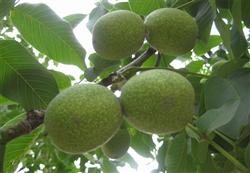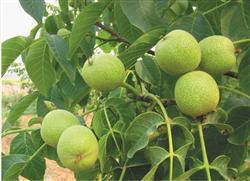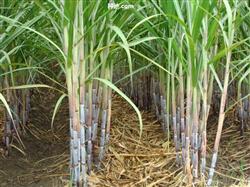How can thin-skinned walnuts be cultivated for high yield?

How can thin-skinned walnut be cultivated for high yield? Please introduce and guide the cultivation of thin-skinned walnut can refer to the following planting methods: 1 apply base fertilizer in autumn after walnut harvest (around September 20) to before defoliation. In the early fruit stage, the trees dig striped or annular trenches at the vertical projection of the crown, with deep 60cm and wide 50cm. In the full fruit period, the big tree dug a ditch at the vertical projection of the tree line, the ditch was deep 80cm and wide 50~60cm, picked out the stones and fertilized according to the principle of kg fruit (fresh fruit) kg fertilizer. The young trees with primary fruit were treated with 50~100kg high quality barnyard manure (raw or ripe), and the trees with full fruit were treated with 150~200kg. After application, they were filled with topsoil 10cm, and then watered. After the fallen leaves are combined with the clear garden, the fallen leaves will be swept into the ditch, buried in the soil and stepped on. (2) pruning and pruning should be carried out from sprouting to defoliation, and the best time is from after fruit harvest to before the leaves turn yellow. 2.1 selection and retention of backbone branches No matter what kind of tree shape is adopted, backbone branches should fully occupy the space, so that the internal and external, upper and lower spaces are evenly distributed, scattered evenly, and do not shade each other. 2.2 when there is no contradiction between the auxiliary branches and the backbone branches, the auxiliary branches are not pruned; when the auxiliary branches affect the growth of the main and lateral branches, they should be thinned or retracted; if there is room for the branches, they can be transformed into fruiting branches. 2.3 in the fruiting branch group, the large and medium-sized auxiliary branches on the backbone branches were retracted and transformed into large and medium-sized fruiting branches, and the strong and developing branches occurred in the crown were strong and weak, straight and flat. In order to promote the growth of branches and form the group of fruiting branches, the methods such as opening angle and truncation of branches should be preferred for the remaining long branches. The branch group that has borne fruit for many years and whose growth is weak should go flat and keep straight, go to the old and retain the new. Results when the distribution of the branch group is too dense, when affecting the growth and light, some weak and poor fruit should be properly thinned, and the strong branches in the branch group should be controlled to prevent "growing trees on the tree". The fruiting performance of walnut fruiting mother branch with long 10~20cm and thick 1cm is the best, so attention should be paid to culture and selection. 2.4 the renewal of the fruiting branch group should pay attention to open the skylight for the big trees that have grown for many years without shaping and pruning. For all upright growing branches, the method of brace, pull, top and hanging should be used to pull to 70m 900. After relaxing the tree potential, it can bear a large amount of fruit, and do not be in a hurry to remove it. After 1 ~ 2 years of branch opening, the big branch with good orientation and balanced growth was selected as the main branch. Too dense branches, poor position of the big branches to be thinned, plastic surgery should be pruned because of the tree, along with the branch shape. (3) the root system of soil ploughing walnut is developed, the whisker root is dense, and the good soil turns over 20cm, which is beneficial to root respiration, promote new roots, and then expand the absorption area and increase yield. Soil ploughing includes ploughing and ploughing of the whole orchard. Big trees with full fruit generally use deep ploughing of the whole garden, young trees and primary fruit trees. If it is the intercropping of forest farmers, also plane the tree plate. The average number of ploughing is 2 to 3 times a year, and one time each in spring, summer and autumn. The method of growing grass at the bottom of trees can be used to return farmland to forest land. 4Fertilizer and water management irrigated once before and after sprouting, and each tree was topdressing with 1~2kg diammonium phosphate or urea. Topdressing and watering once before and after flower bud differentiation (before and after flowering) is beneficial to flowering, fruit setting and young fruit expansion. In the period of young fruit expansion, phosphorus and potassium fertilizer should be applied to reduce the amount of nitrogen fertilizer. Watering after fruit harvest can effectively promote the decomposition of base fertilizer, increase the nutrient reserve of trees before overwintering, improve the overwintering ability, and be beneficial to sprouting and flowering in the following year. Winter irrigation is carried out from defoliation to soil freezing to prevent freezing and drought in early spring. Click to get more walnut planting techniques click to get more fruit planting techniques
- Prev

How to control diseases and insect pests in planting walnut
How to control diseases and insect pests when planting walnuts? Please give guidance on the following two walnut pest control methods for reference: walnut limb moth control methods: walnut limb moth commonly known as walnut black, adults occur from June to July, and larvae do the most serious harm in July. The insect has weak drug resistance and can choose 10% chlorine, a pollution-free pesticide.
- Next

How to apply fertilizer effectively in sugarcane planting
How to apply fertilizer effectively in sugarcane planting? Please introduce that due to the well-developed root system and long growth period of sugarcane, a large amount of nutrients should be taken away from the soil in each crop. Therefore, planting sugarcane and applying organic fertilizer can improve soil structure, and it is very effective to increase yield and improve soil. Base fertilizer: apply sufficient base fertilizer.
Related
- Moge, come on! The staff of the peasant association in the producing area of cantaloupe were frightened when the crowd gathered.
- Causes and Solutions of low Fruit setting rate of Apple
- Symptoms and control measures of passion fruit virus disease
- Fruit growing lesson: how do apple orchards keep high yields?
- Can you build orchards in the mountains? What are the pros and cons?
- How to manage the coloring period of Crisson grape?
- This paper introduces the processing technology of two kinds of fig products.
- How much is a month for retired teachers in rural areas by 2020?
- How can strawberry planting increase sugar content? We should pay attention to management in many aspects.
- What are the cultivation techniques on how to improve the yield of golden fruit?

